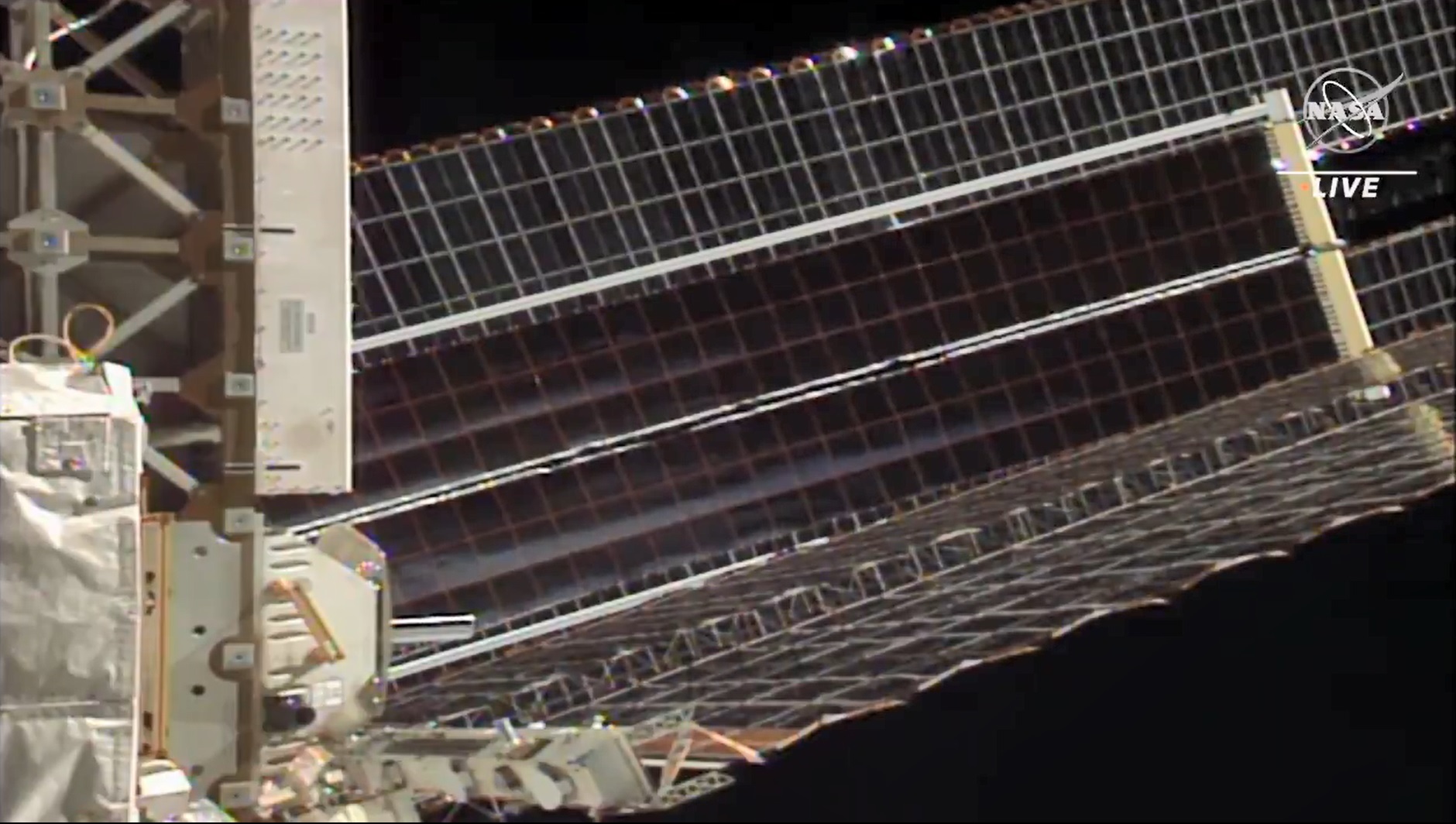Second of the New Solar Arrays Successfully Deployed

Working together outside the International Space Station, ESA (European Space Agency) astronaut Thomas Pesquet and NASA astronaut Shane Kimbrough successfully installed, connected, and deployed a new ISS Roll-Out Solar Array (iROSA). The array deployment began at 1:45 p.m. EDT using stored kinetic energy, unfurling over the course of about 10 minutes. Mission control confirmed good power generation on the new array.
It is the second of six total new iROSAs that will be installed in the coming years to upgrade the station’s power supply and completes installation of the pair delivered aboard SpaceX’s cargo Dragon on the company’s 22nd commercial resupply services mission to the station.
The new solar arrays are positioned in front of current arrays, which are functioning well but have begun to show signs of expected degradation as they have operated beyond their designed 15-year service life. The first pair of legacy solar arrays were deployed in December 2000 and have been powering the station for more than 20 years.
The new solar array is positioned in front of the current solar array on the same plane and rotary joints, but not directly on top of the primary solar arrays. The new arrays are 60 feet long by 20 feet wide (18.2 meters by 6 meters) and will shade a little more than half of the original array, which is 112 feet long by 39 feet wide. Each new iROSA will produce more than 20 kilowatts of electricity, while the current arrays generate, on average, 17 to 23 kilowatts each.
Boeing, NASA’s prime contractor for space station operations, its subsidiary Spectrolab, and major supplier Deployable Space Systems (DSS) provided the new arrays. The technology was developed and proven by NASA’s Space Technology Mission Directorate during a demonstration on the space station in 2017, and the same solar array design will be used to power elements of the agency’s Gateway lunar outpost as well as on the Double Asteroid Redirection Test (DART) mission.
Learn more about station activities by following the space station blog, @space_station and @ISS_Research on Twitter as well as the ISS Facebook and ISS Instagram accounts.
from Space Station https://ift.tt/3vRaTHm
Comments
Post a Comment